Public Spaces
Shared Streets: Breaking down the elements for success
For many, the term shared streets may conjure images of farmers’ markets, pop-up restaurant patios, and festivals bringing people out on a warm summer weekend. But what happens when the market stalls are packed up and the temperature drops? How does the street look, feel, and function when temporary activations are no longer there? The answer to that question lies in how the space was designed in the first place. There are several details that must be considered through the planning, design, and implementation process to create a successful shared street.
1. Land Use
Land use is one of the most fundamental considerations. Shared streets work best with high levels of pedestrian activity, which can be achieved with permanent features such as small shops, cafes, and restaurants that activate the street and invite people to the area at various times of the day and through all seasons. Destinations in the surrounding area such as parks, museums, and post-secondary campuses can also invite people to the neighbourhood. Such attractions generate foot traffic and contribute to the need for shared streets in the first place.
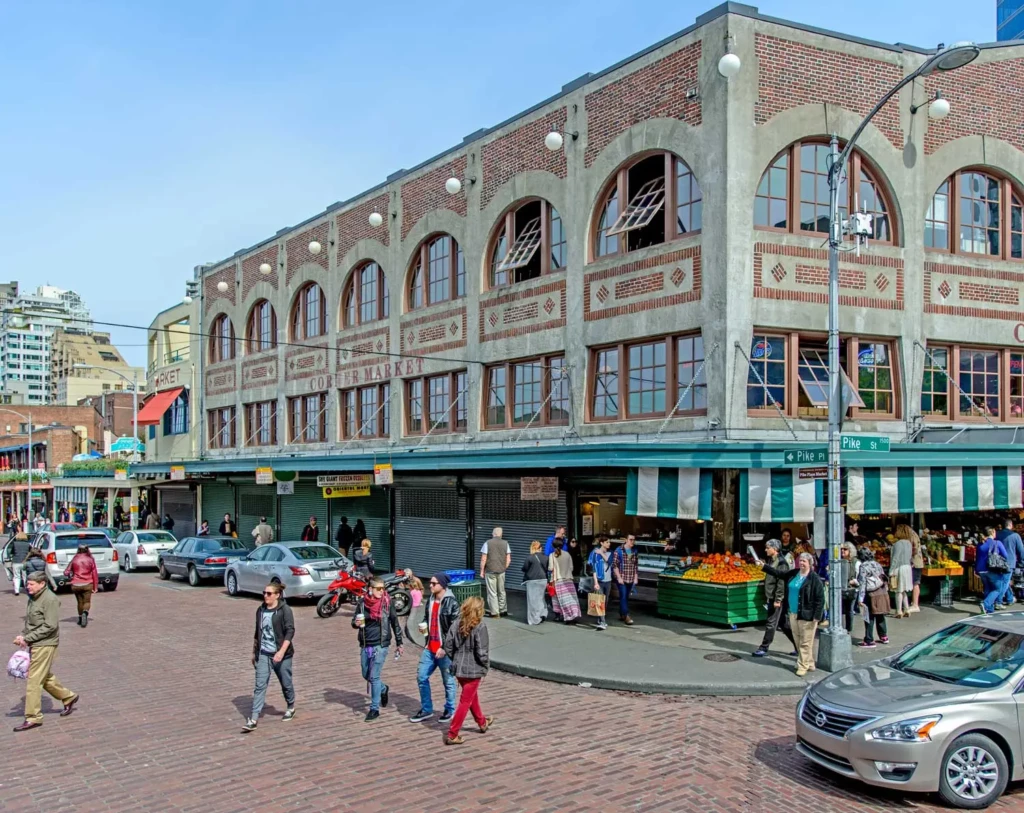
2. Traffic Volumes
Another fundamental piece in the shared street puzzle is low vehicle traffic volumes. Through traffic should be discouraged by providing alternative routes that are designed to move motor vehicles. Most traffic on the shared street should be local, be it residents or loading/delivery vehicles. The transportation network linking to the shared street should also provide strong connections by public transit, walking, and cycling.
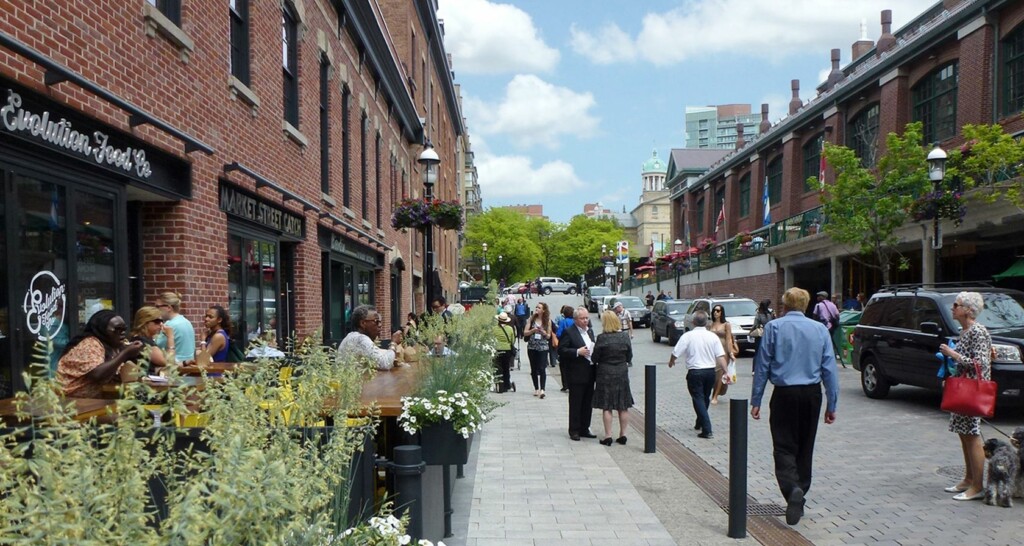
3. Level Street Treatment
Shared streets should be curb-less spaces with a flush surface across the street, so as not to create segregated pedestrian and vehicle spaces. This can also serve to create a more accessible space for strollers and people using mobility aids. While there may still be a pedestrian-only space, the lack of vertical separation signals that pedestrians may walk anywhere they desire. If provided, the pedestrian space can still be delineated with textured and contrasting materials that provide tactile feedback for those with visual impairments and storm grates that serve drainage needs.
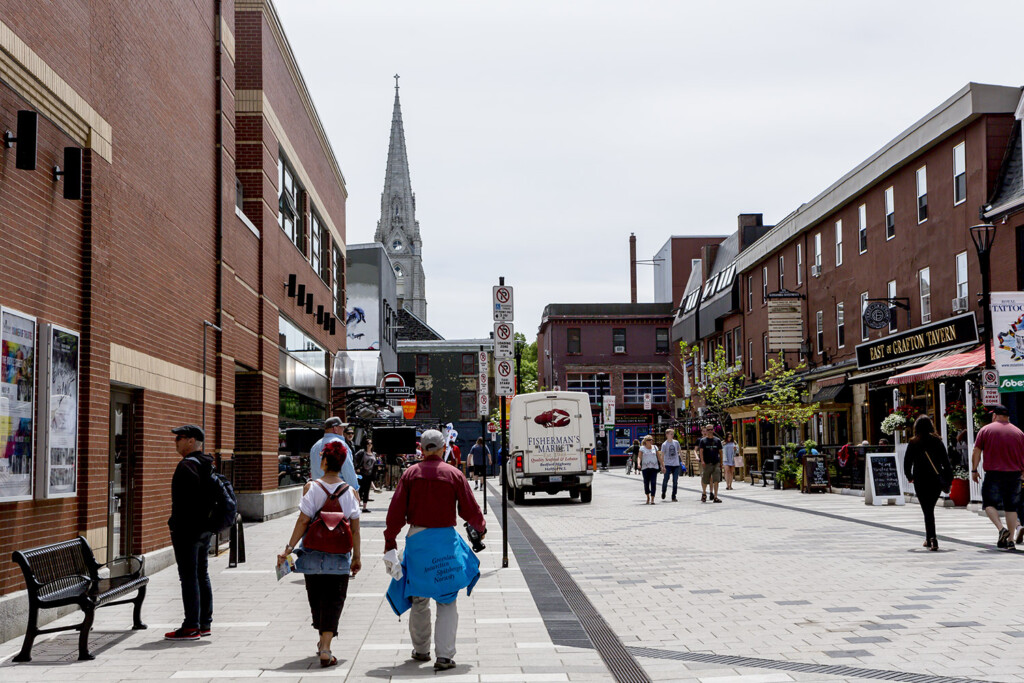
4. Texture
Textured or permeable pavement, which can be achieved using paving tiles, reinforces pedestrian-priority and reduces vehicle speeds by making it less comfortable to drive at higher speeds. For all modes to mix safely and comfortably, vehicle speeds should be kept low: 10 to 15 km/h. The textured pavement also provides feedback to motorists in the form of vibration and noise which drivers will respond to by slowing down.
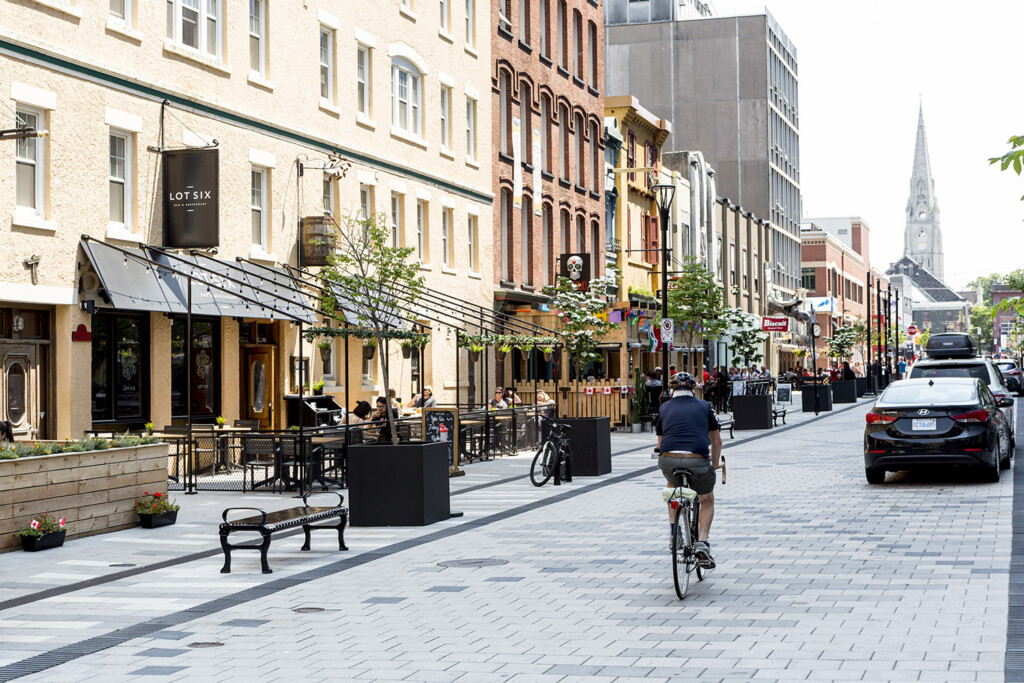
5. Street Widths
Another approach to reduce vehicle speeds is designing a narrow carriageway for vehicles and shifting the travel path laterally (as opposed to having a straight roadway), often achieved through the addition of chicanes. This requires motorists to travel slower and pay greater attention to navigate the space and avoid conflicts with other users. The travel path can be shifted by alternating on-street parking, loading zones, or other features such as landscaping.
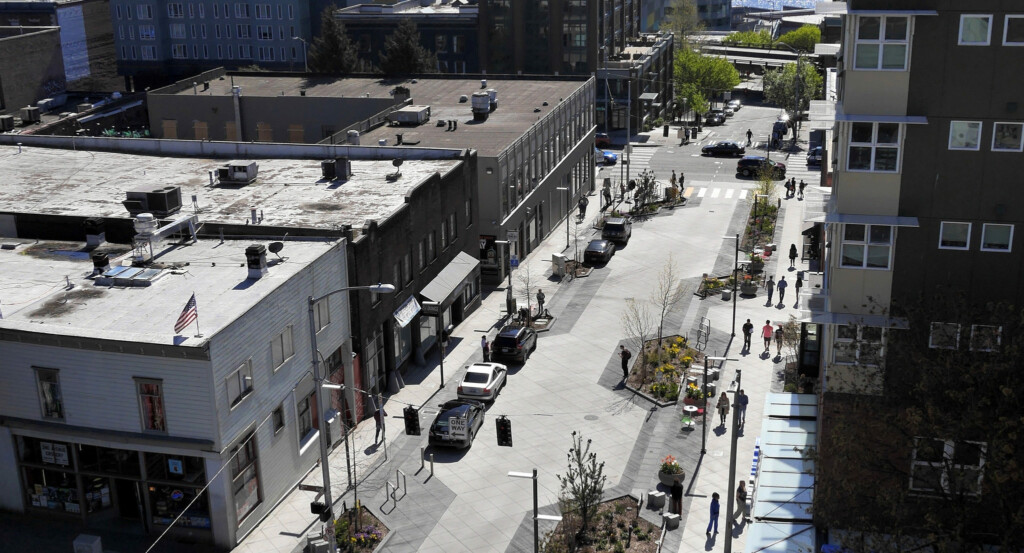
6. Street Furniture, Lighting, and Other Elements
The addition of elements such as benches, streetlights, bicycle parking, public art, street trees, planters, and landscaping supports numerous objectives of a shared street. These features help to narrow the carriageway (physically or visually), provide protection (whether real or perceived) for the pedestrian-only space, provide seating opportunities, lighting, shelter from the elements, rainwater retention, and beautification of the street. While there should be enough features to delineate the space and serve the needs of users, these elements should not form a wall between the pedestrian-only area and the carriageway. There should be many openings providing opportunities for pedestrians to enter or cross the carriageway and maintain the sense of shared space. These openings should also consider accessibility needs and be wide enough to comfortably accommodate mobility devices and aids.

Combining the Elements to Create Inviting Spaces
Planning and designing a shared street with each of these considerations in mind will ensure the creation of a high-quality environment where all road users can safely and comfortably mix. Active building frontages, visual interest, and high-quality design enhance the character of the street and invite people to visit and spend time in the space no matter the time of day or season.
 ">
">Eric Post
“I believe one of the most effective ways for us to reduce our impact on the environment is to transition to more environmentally sustainable forms of transportation. Building cities where walking and cycling are safe, easy, and enjoyable is a win for all community members and the planet.”

